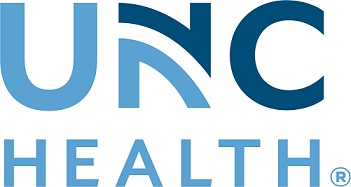Newswise — For the last three years, the University of North Carolina at Chapel Hill has sent a medical team once a year to Kampala, Uganda, the capital of the African nation. In Kampala the UNC Project-Uganda team helped establish a children's heart surgery unit at Mulago Hospital and performed many life-saving heart repair procedures on children who would otherwise go without treatment.
Now the team is turning the tables and bringing an 18-year-old young man from Uganda to North Carolina Children's Hospital " with help from the Children's Heart Project of Samaritan's Purse and Rotary International's Gift of Life program " for a catheter-based heart repair procedure on Monday (May 18) that the hospital in Uganda is not equipped to provide.
Patrick Kahuma suffers from an extremely narrow pulmonary valve in the heart, a condition called pulmonary valve stenosis. He also has an atrial septal defect (ASD), a congenital hole in the heart. UNC's Elman Frantz, M.D., will repair Patrick's pulmonary valve by placing a balloon catheter inside it and using the balloon to expand it. The UNC medical team also plans to repair Patrick's ASD with a catheter-delivered closure device while he's at UNC. If that is not possible, then they will repair it surgically when the team returns to Uganda in September.
"When a child is born in the U.S. with these problems, they are usually repaired within the first few years of life and then the child can develop normally," said Keith Kocis, M.D., medical team leader for UNC Project-Uganda.
"In Patrick's case, it's remarkable that he has survived to the age of 18 without treatment. But if he doesn't get treatment now, he faces an inevitable sudden death at some point in the future from one of three causes: heart arrhythmia, stroke or an infection in the heart called endocarditis," Kocis said.
The plan to bring Patrick to Chapel Hill began to take shape when Dirk Hamp, M.D., a pediatrician in Wake Forest, N.C., referred one of his North Carolina patients to Kocis, a pediatric cardiac intensivist at UNC.
The two men bonded over the fact that both were doing medical mission work in Uganda. In Hamp's case, he had traveled to Kaihura, Patrick's village in Uganda, with a group called Embrace Uganda. Hamp examined Patrick, diagnosed him with a heart murmur two years ago and has been working since then to find a way for Patrick to get treatment. Embrace Uganda has contributed $10,000 towards the cost of Patrick's procedure.
"I met my friend Patrick two years ago when I was in Uganda to adopt my daughter, Jane," Hamp said. "He came to see me in the clinic. I discovered a heart murmur so loud it hardly required a stethoscope to hear it. I came back to the U.S. and began looking for a way to get him care and was blessed to connect with Keith Kocis.
"I spent another month with Patrick last June when I took a team of 45 people to Patrick's village to serve the people there. And after a long two-year journey an incredible group of organizations has come together and I am so grateful to have Patrick in my home knowing he will get this life-saving surgery."
Many different people and several organizations are playing a role in making Patrick's trip to UNC possible. Samaritan's Purse arranged for Patrick to be evaluated in Uganda and travel to North Carolina through its Children's Heart Project and is partnering with Rotary International's Gift of Life program and UNC Project-Uganda to give Patrick a chance to experience a normal, healthy life. In addition, Thrust Clothing, a company founded by UNC-Wilmington alumni, organized an April 4 fundraiser that raised $6,000 to help Gift of Life partly cover the expenses of Patrick's hospital bills.
Hamp and his wife, Paige " who have an adopted 10-year-old daughter from Uganda " agreed to host Patrick in their Wake Forest home during his stay in North Carolina.
The procedure is not without risk, Kocis said. Because of Patrick's narrow pulmonary valve, the right side of his heart has had to work extra hard to pump blood through the valve. That in turn has caused his right side heart muscle to grow enlarged and become extremely stiff. For those reasons, it's possible that the medical team will not be able to safely place a balloon catheter through the valve to relieve the obstruction. In addition, there is a risk that Patrick's heart could stop during the procedure.
The medical team first went to Uganda in 2004 as part of the Amal Murarka International Pediatric Health Foundation, named for a UNC physician who had worked in Uganda and died suddenly in an automobile accident. In 2008 the Uganda team formed a partnership with the Institute for Global Health and Infectious Diseases at UNC to establish the UNC Project-Uganda. The UNC Project-Uganda is dedicated to providing sustainable health care delivery to infants, children, and adolescents in Uganda and improving the medical knowledge of the local health care workforce through in-country training and a physician exchange program. The project plans to expand its current programs to offer service and research opportunities for UNC faculty and students.
Related links:UNC Project-Uganda site: http://globalhealth.unc.edu/unc-project-uganda.php UNC Project-Uganda blog: http://uncugandateam.blogspot.com/ Samaritan's Purse Children's Heart Project site: http://www.samaritanspurse.org/index.php/chp/ Embrace Uganda site: http://www.embraceuganda.org/ Gift of Life Our Hearts are in Uganda site: http://www.giftoflifeinternational.org/pages/uganda.php
We are planning to live tweet Patrick Kahuma's procedure on Monday, May 18, at http://twitter.com/unc_health_care.
